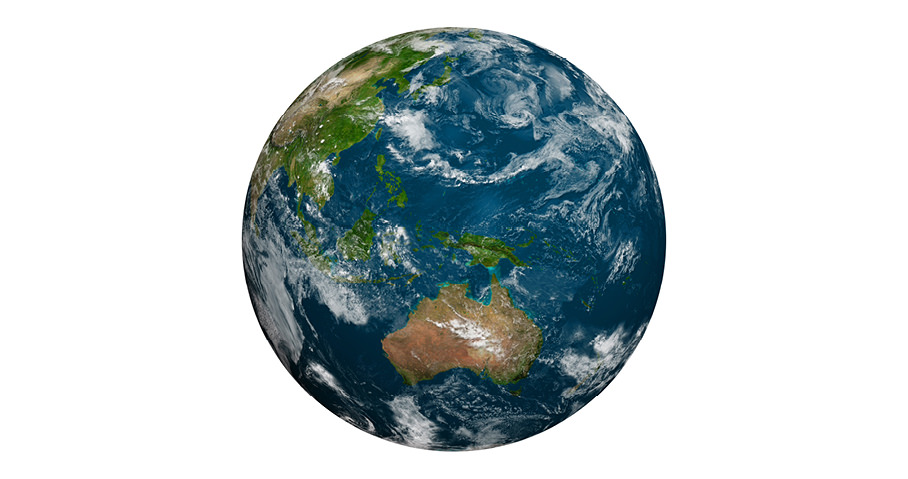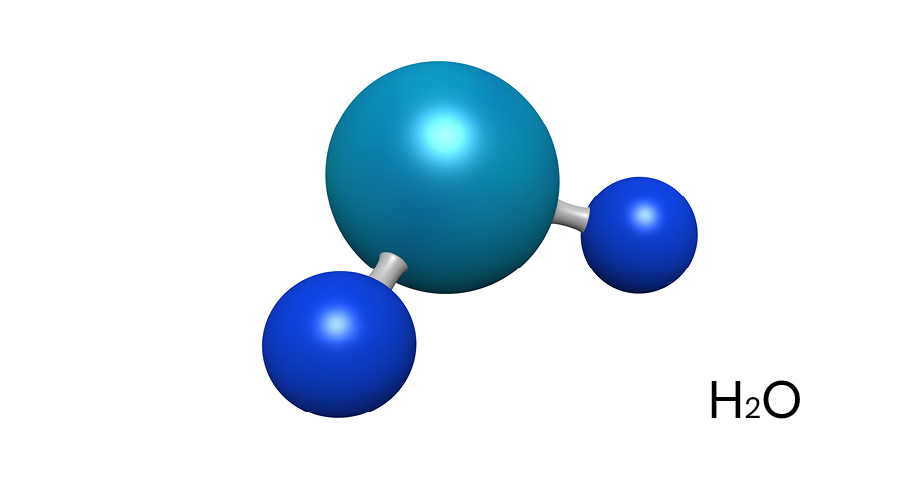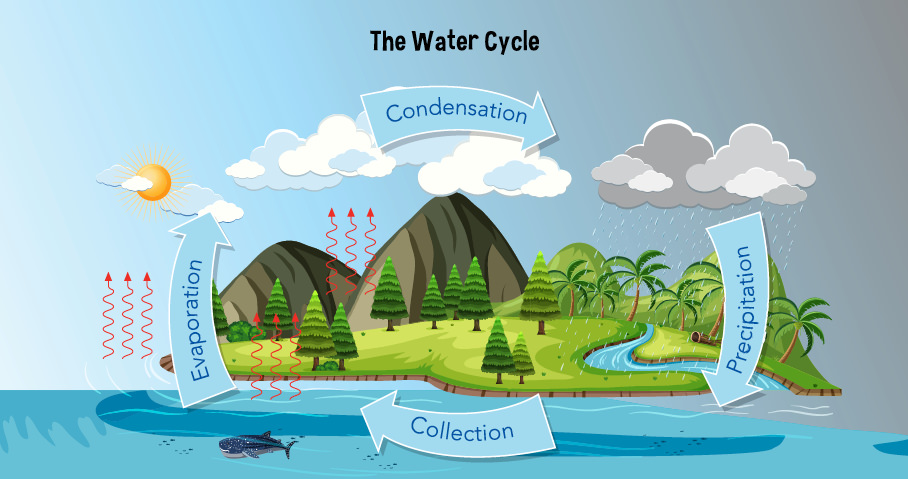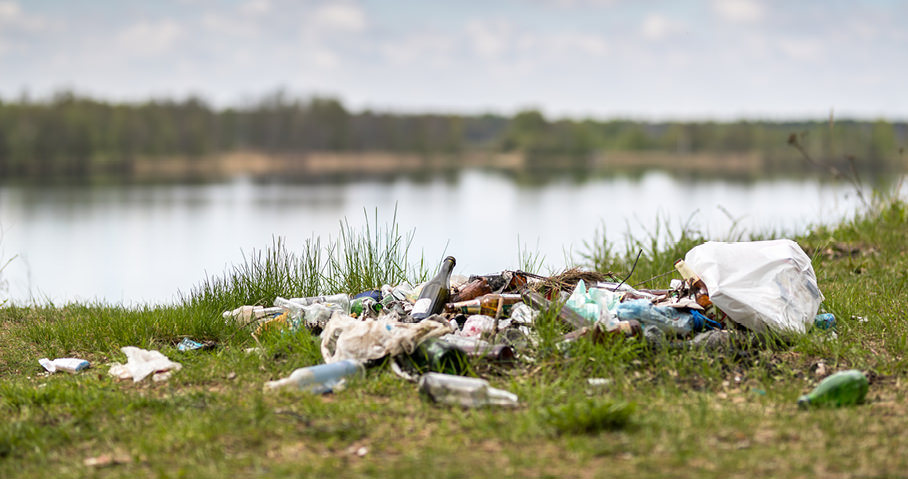STORY
Amir had taken his little cousin Kai to the beach during the school holidays. Kai had helped Amir pick up some of the rubbish from the beach, as well as pick up lots of broken shells, twigs and sticks to play with. When they arrived at Amir’s house, Kai decided that he no longer wanted the twigs and sticks so he decided to put them in the sink and let the tap water wash them down the drain.
“Kai! Stop!” Amir couldn’t help himself. “We need to be very careful with what we throw out in our drains. Did you know that the water that comes out of our taps ends up in our oceans? We need to stop and think about what we put down the sink. What do you think will happen to our oceans if we keep throwing rubbish down the sink?”

Investigate the journey of water through the environment, from the mountains to the sea through an active demonstration. Discover and discuss changes to quality of the water on this journey through the environment?
For children to:
- understand the journey of water from taps to the ocean
- learn that household materials can enter the waterways
- understand that what happens on land can impact our rivers and ocean.
This activity can be undertaken at any time of year.
Introduction
Water covers 75% of the earth’s surface; only 1% is available as fresh water. Freshwater is essential for all land plants and animals to survive. The story of water learning activity investigates the journey of water through the environment, from the mountains to the sea.
*Adult preparation for the activity 20 minutes
Checklist
Instructions
STEP 1
Discussion: What is water?
Have a discussion as a class on what water is and why it is important for plants, animals and people. Introduce key ideas about water:
- Where does our water come from?
- What happens if our water gets polluted/dirty
- Can we run out of water?
STEP 2
Demonstration/activity: How water flows.
Use clay to make a small hill in a waterproof container. Ask your students which way they think the water will flow? Pour water onto the hill to demonstrate how the water flows downhill.
STEP 3
Activity: Follow the journey of water.
Organise each group or child to have a jar with their item from the resource list. Introduce the journey of water story and explain that as they will add items as you read the story. Ask the children to observe what happens to the water as they add each item so that you can discuss at the end of the story.
Using the activity sheet, read the story of water or make up your own and ask the kids to add the item in their jar to the container of water. Kids put small amounts of household material (detergent, oil, dirt, chocolate drink powder, plastic etc) to represent land uses and environmental issues.
STEP 4
Discussion
What did the children observe as they added different items to the water?
Discussing this as it happens can lead to more learning discoveries.
What have you discovered?
What can we do to stop these things getting in the waterways and the ocean?
Extension Activity
Clean up our waterways: Students can use plastic strainers to remove the floating pollution and discuss ways of stopping it returning. Once the water has settled students can scoop of the cleaner water into a separate container. What objects were easier to clean? What items were more difficult?
Children can tell their own stories about the journey of water. What would they do differently to help keep the waterways clean? Draw, write or perform the story.
You can incorporate aspects from the Junior Landcare learning activities Every drop counts, being water wise!, Water for Wildlife, Waterways: behaviour change or Waterways: clean-up activities.
Curriculum and Framework Links
SCIENCE
Foundation:ACSSU002,ACSIS011
Year 1: ACSSU211,ACSIS025
Year 2:ACSSU030,ACSIS038, ACSHE035
HUMANITIES AND SOCIAL SCIENCES
Year 2: ACHASSI042
DESIGN AND TECHNOLOGIES
Year 2: ACTDEK003
HEALTH AND PHYSICAL EDUCATION
Year 2: ACPPS018, ACPPS022, ACPPS023
ETHICAL UNDERSTANDING
Exploring values, rights and responsibilities.
PERSONAL AND SOCIAL CAPABILITY
CURRICULUM CONNECTIONS
CROSS CURRICULUM PRIORITY
THE EARLY LEARNING YEARS FRAMEWORK
MY TIME, OUR PLACE: FRAMEWORK FOR SCHOOL AGE CARE
Reference List
ONLINE RESOURCES
Discover more about the Natural Water Cycle and learn Why water is Important to all life on earth.
PRINTABLE RESOURCES
Here are some fun water activities from Sydney Water you can print out:
WATCH
Watch these short videos from Sydney Water to learn about the Water Cycle (3 minutes) and discover what where our Wastewater goes. (3 minutes).
We value your feedback
When you have finished this learning activity, please tell us what you think with our survey.
Your feedback will help Landcare Australia improve the activities in the Junior Landcare Learning Centre.
Why not try one of our other Junior Landcare learning activities?
Love Letters to the Land
Biodiversity|First Nations Perspectives|Food Production|Waste Management
Creating a worm farm
Waste Management
Caring for our coasts: beach clean-up
Waste Management
Waterways: clean-up
Waste Management



